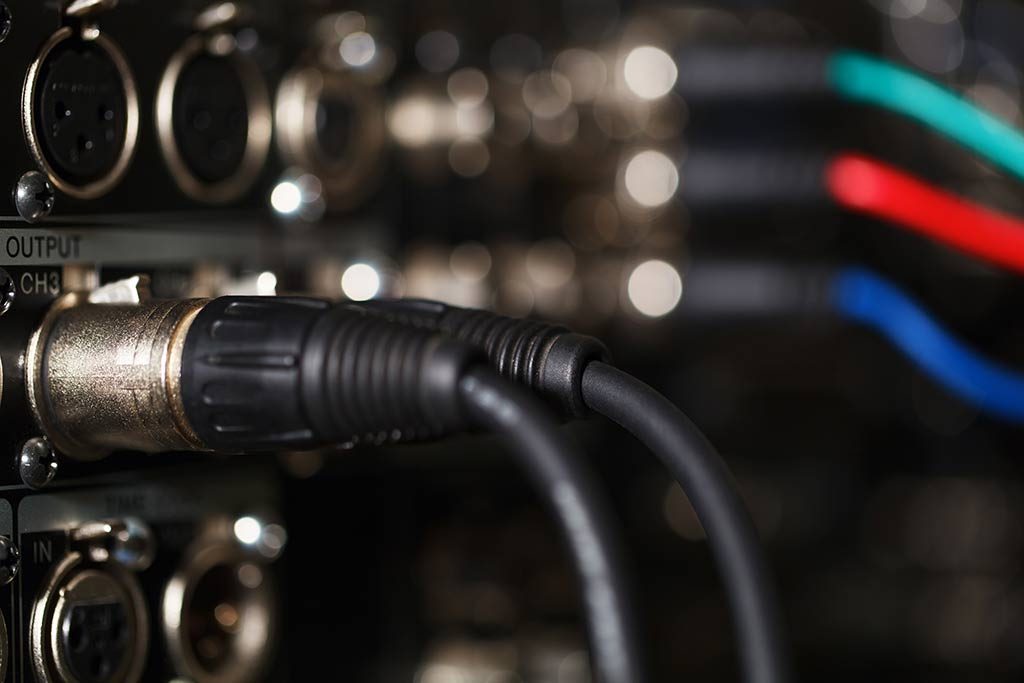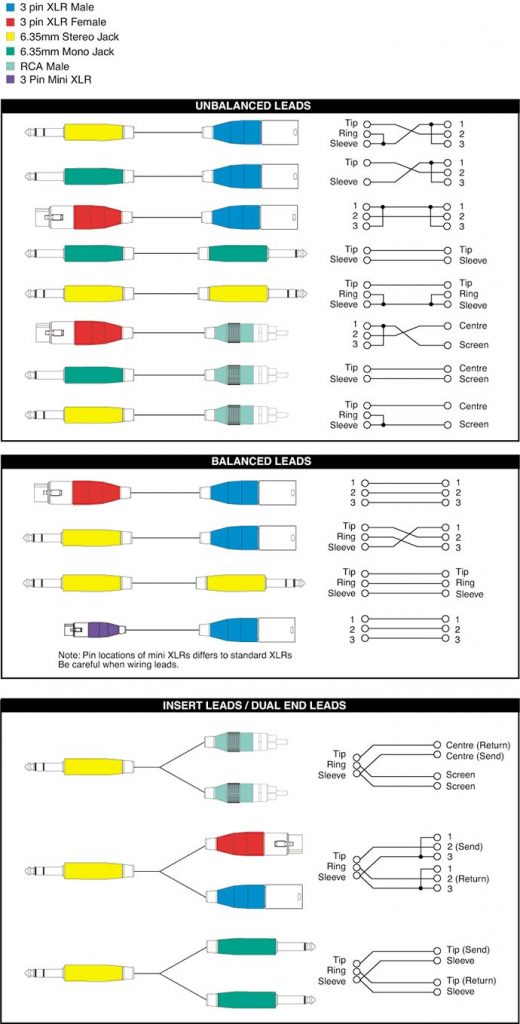
Public address systems typically feature two types of signals, commonly known as balanced and unbalanced. In order to minimise signal path noise and get the right output level for your system its important to choose the right lead for the right job.
First lets discuss the types of signals, balanced and unbalanced.
Unbalanced Signals
An unbalanced cable is constructed from two conductors, one signal wire and one ground wire. An unbalanced cable can be an RCA or more commonly a 6.35mm jack connector in a “mono” or tip-sleeve (TS) configuration. XLR connectors can also be configured in an unbalanced manner. Although these have three pins when wired for unbalanced purposes they combine pins 1 and 3 into a single conductor).
Unbalanced signals are typically more susceptible to noise and hum. This is due to the limitation of having two conductors. The signal conductor forms the centre of the cable, while the ground wire surrounds the signal conductor. This helps to shield the signal conductor from outside sources of interference. As you can imagine the possible sources of outside electrical noise in a packed commercial audio rack are numerous, including other audio equipment, electrical connections, lighting transformers and sources of RF noise such as TV and radio transmissions. To make matters worse, the wire itself acts like an antenna for noise, picking up nearby stray signals.
The takeaway from all this is that unbalanced leads are great for short runs between equipment. In public address systems they are typically used for audio sources where a balanced output is not provided such as most CD players, tuners and streaming audio players. Ideally, lengths should be kept below 5m for these signal paths. If a longer length is required, it is best to convert the signal into balanced and then back to unbalanced at the other end (such as the Redback A 2514).
Balanced Signals
Looking at your average XLR connector you can understand very quickly that balanced uses three conductors. Two signal wires and one ground wire. The two signal wires are typically referred to as ‘hot’ and ‘cold’. As in the unbalanced cable the ground wire surrounds the main conductors to reduce outside interference. The difference this time is the “differential”.
The differential is a concept whereby two identical copies of one signal are sent down the same signal path with opposite polarities. The receiving equipment will then flip the inverted signal back into its original orientation. But because both versions of the signal travelled along the cable and were subject to the same interference, flipping the polarity of the inverted signal will produce the original signal unaltered. The noise however is not flipped and as a result is cancelled out.
Essentially this signal comparison process allows balanced line signals to be run over far greater distances compared to unbalanced and are especially useful for use in high noise environments.
Connector and cable variations.
It’s important to note that whilst all two conductor connections like RCA or TS jacks are obviously unbalanced, cables can also APPEAR to be balanced because they have three conductors. Whilst their wiring configuration is actually unbalanced.
This is simply because you often need to go between a piece of equipment with an unbalanced output and balanced input. The most common of these types of leads is the 3 pin XLR to 6.35mm TS jack. In this lead, pins 1 and 3 of the XLR are wired together and both are connected to the sleeve of the 6.35mm jack plug. This wiring configuration eliminates all of the benefits that a balanced lead provides as the signal path remains unbalanced.
See the examples below for common examples of audio lead adaptors and their wiring configurations:






